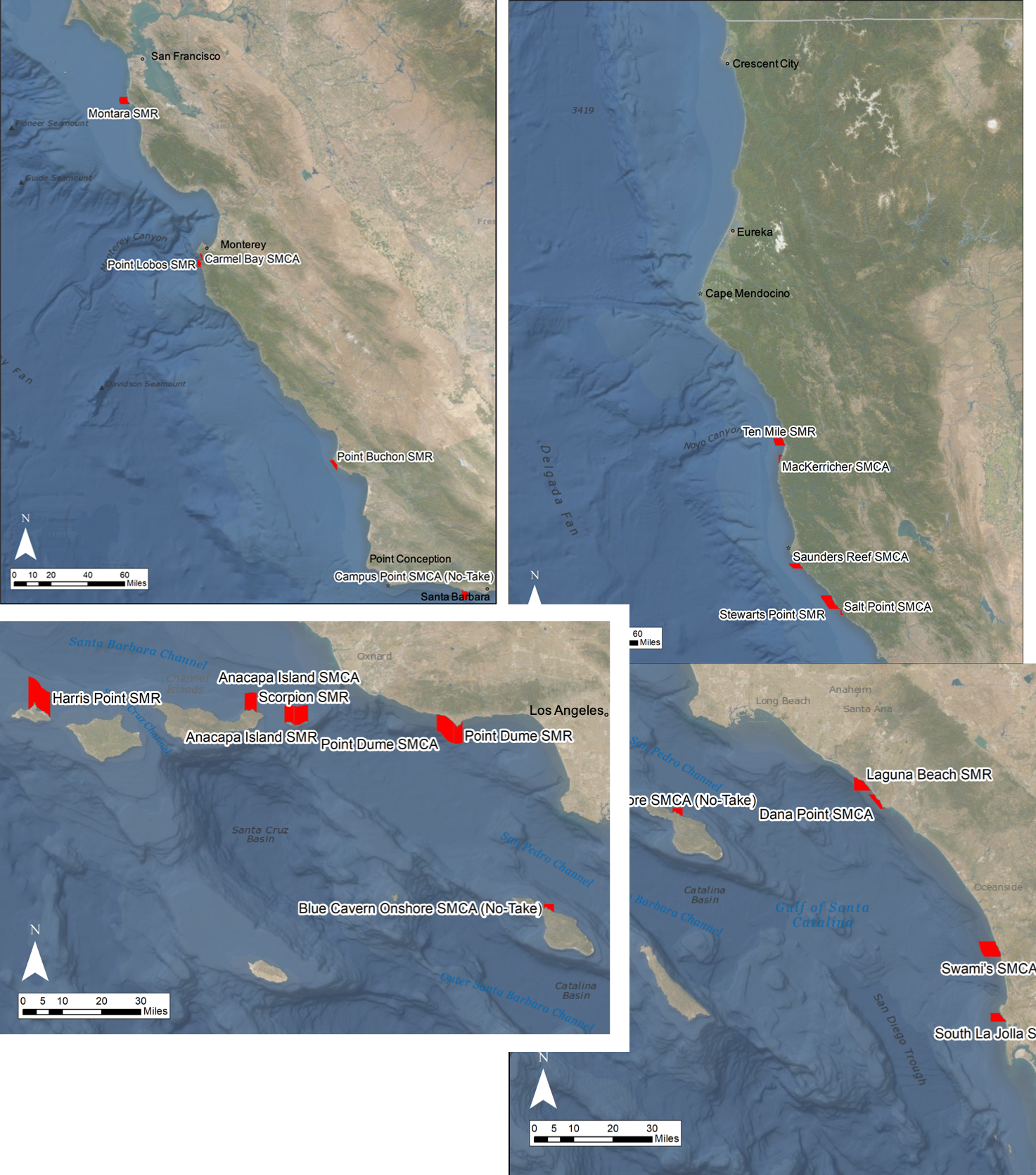Kelp forests and shallow rocky reefs represent some of California’s most iconic nearshore marine ecosystems. They support ecologically, economically, and culturally important native species and provide valuable ecosystem services including tourism and nearshore recreational and commercial fisheries.
This project aggregated historical biological and environmental data from previous surveys of kelp forest and shallow rocky reefs, which when combined with new data collected by the team informed integrated analyses to assess trends in kelp forest and shallow rocky reef communities at the scale of individual MPAs as well as regional scales.
The team assessed which regions of California had the strongest response to MPAs, MPA design attributes (such as size and distance to the closest port), and habitat diversity and composition, species diversity and richness, response to fisheries, and environmental conditions. California’s 24 MPAs are diverse in size, composition, protections, and use. The team found MPA effects vary across species, MPAs, biogeographic regions, and time periods. California has a huge and diverse coastline, and key findings were often regional, no statewide trends emerged. The team concluded that MPA analysis at and across regional scales will be more insightful than combined state-wide analyses.
Project monitoring sites
This project plans to conduct monitoring at the following Tier I sites (listed from north to south):
- Ten Mile SMR
- MacKerricher SMCA
- Saunders Reef SMCA
- Stewarts Point SMR
- Salt Point SMCA
- Montara SMR
- Carmel Bay SMCA
- Point Lobos SMR
- Point Buchon SMR
- Campus Point SMCA
- Harris Point SMR
- Scorpion SMR
- Anacapa Island SMCA
- Anacapa Island SMR
- Point Dume SMCA
- Point Dume SMR
- Blue Cavern Onshore SMCA
- Laguna Beach SMR
- Dana Point SMCA
- Swami's SMCA
- South La Jolla SMR